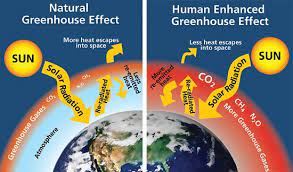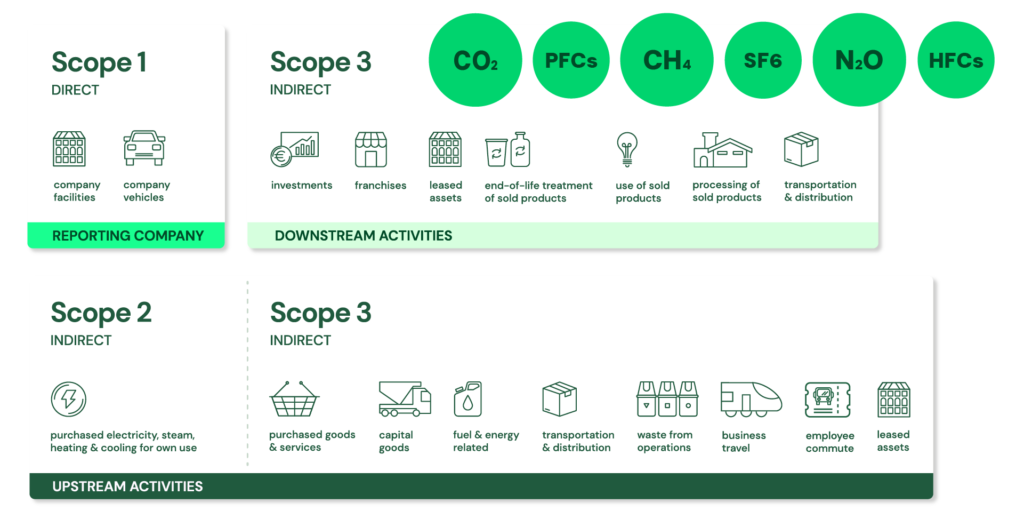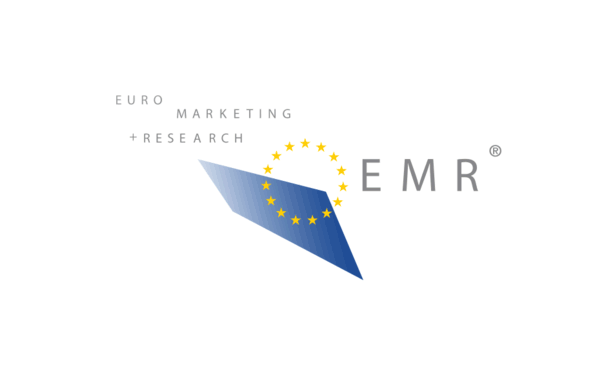Schneider Electric – Schneider Electric and Climeworks sign 31,000-ton high-durability carbon removal agreement
- Schneider Electric and Climeworks join forces to remove 31,000 tons of CO2 from the atmosphere by 2039
- The multi-year offtake agreement is Schneider Electric’s first purchase of high-durability carbon removal toward its net-zero commitments
- The companies are collaborating on technology solutions to accelerate the cost-reduction trajectory of Direct Air Capture
Schneider Electric, the global leader in the digital transformation of energy management and automation, and Climeworks, a global leader in carbon removal, announced today a major agreement to remove 31,000 tons of carbon dioxide from the atmosphere by 2039.
This represents Schneider Electric’s first purchase of high-durability carbon removal and Climeworks’ largest-ever portfolio agreement to date.
Net-zero ready operations through the next decade
On behalf of Schneider Electric, Climeworks will remove 31,000 tons of CO2 through three high-durability solutions: Direct Air Capture and Storage, Bioenergy with Carbon Capture and Storage, and Enhanced Rock Weathering. Each of these solutions can store CO2 for thousands of years.
This landmark agreement complements Schneider Electric’s emissions reduction efforts. The company is committed to becoming net zero across its entire value chain by 2050 and achieving “net-zero ready” operations, including a 90% reduction of CO2 emissions for Scope 1 and 2, by 2030 (from 2017 baseline). The carbon removal credits issued from these projects will neutralize a portion of the estimated residual emissions once the company achieves this target. By securing access to high-durability carbon removal today, Schneider Electric is addressing future neutralization needs while pursuing aggressive emissions reductions and supporting the scale-up of an industry crucial for achieving net zero.
“Both carbon removal and carbon reduction are fundamental to achieving our climate goals, as well as those of the planet. The move into durable carbon removal that we’re making today complements our continuous efforts on accelerating emissions reductions, and our existing investments in nature-based carbon removal. Here’s an emerging industry, where early engagement catalyzes the scale-up of a wide range of technologies and supports the path for Schneider Electric and others in the future. In Climeworks, we have found a partner with unparalleled history and know-how in the carbon removal industry, showing time and again what’s possible,” says Esther Finidori, Chief Sustainability Officer of Schneider Electric. “This agreement represents an important step in diversifying our carbon removal portfolio with high-durability solutions and adds to our carbon removal capabilities as we prepare for the journey to 2050.”
Scaling both technology-based and nature-based carbon removal solutions
In August 2022, Schneider Electric was one of the first companies to see its Greenhouse Gas (GHG) net-zero targets validated by the Science Based Targets initiative’s (SBTi) Corporate Net-Zero Standard. This standard requires companies to reduce emissions by at least 90 percent and neutralize any residual emissions with high-quality carbon removal. The evolution of the Corporate Net-Zero Standard over the coming year will likely set mandatory milestones for carbon removal on the path to net zero. This landmark agreement with Climeworks represents an important step in the gradual scale-up of high-durability carbon removal that is critical for achieving Schneider Electric’s and the world’s net-zero targets.
To meet global climate goals, both technology-based and nature-based carbon removal solutions must scale significantly. They deliver wide social, economic, and environmental benefits alongside carbon removal. As part of its comprehensive strategy, Schneider Electric will continue to scale investments in nature-based carbon removals through the Livelihoods Carbon Fund and its subsidiary EcoAct – a recognized leader in supporting carbon credit advisory, sourcing, and project development that supports companies worldwide in achieving their climate goals.
Christoph Gebald, co-CEO and co-founder of Climeworks says: “This agreement marks a milestone for Climeworks. Schneider Electric is nothing short of an institution, and we are proud to provide them with the most durable carbon removal available. Demand for solutions that can store CO2 permanently will only grow, making early access essential for forward-looking companies. Our collaboration will not only help to further accelerate the cost-reduction trajectory of Direct Air Capture, but also demonstrates that climate action and economic foresight go hand in hand—and carbon removal is where they meet.”
Long-term commitments for large-scale change
Carbon removal solutions must grow into large-scale infrastructure projects to remove billions of tons of CO2. Building these projects to capture and store CO2 will require years. Long-term commitments from companies like Schneider Electric are indispensable to demonstrate enduring demand to project developers, investors, and the growing supply chain.
The three solutions in Schneider Electric’s portfolio offer promising pathways to scale by 2050, with distinct areas where they need to mature further. For Bioenergy with Carbon Capture and Storage and Direct Air Capture and Storage, securing the necessary funding to build the CAPEX-intensive infrastructure is key. Climeworks is focused on building the world’s lowest-cost Direct Air Capture technology to make carbon removal a reality at scale. The two companies are collaborating on technology solutions aimed at enhancing energy efficiency and supporting the cost-reduction trajectory of Direct Air Capture. For Enhanced Rock Weathering, refining the monitoring, reporting, and verification process is a priority. Streamlined through a single contract with Climeworks, Schneider Electric is diversifying its impact across these three solutions.
Climeworks works closely with its suppliers, leveraging years of experience as a project developer, securing volume reserves, and aligning them with demand from buyers, while striving to minimize environmental impact throughout the carbon removal lifecycle. The company developed a rigorous quality assessment framework to identify the highest-quality carbon removal solutions according to trust, impact, and risk criteria, and only partners with third-party certified suppliers.
SourceSchneider Electric
EMR Analysis
More information on Schneider Electric: See the full profile on EMR Executive Services
More information on Olivier Blum (Chief Executive Officer, Schneider Electric): See the full profile on EMR Executive Services
More information on the Schneider Electric Sustainability Strategy, Sustainability Impact (SSI) 2021-2025 Program and 2024 Sustainability Report: See the full profile on EMR Executive Services
More information on Esther Finidori (Member of the Executive Committee and Chief Sustainability Officer, Schneider Electric): See the full profile on EMR Executive Services
More information on EcoAct by Schneider Electric: See the full profile on EMR Executive Services
More information on Climeworks: https://climeworks.com/ + A credible, science-based net-zero strategy requires both substantial emissions reductions and the active removal of unavoidable CO₂ emissions (according to the Science Based Targets initiative, SBTi).
We specialize in crafting best-in-class carbon removal strategies, tailored to your needs. These strategies combine nature-based solutions with engineered technologies, including Climeworks’ cutting-edge Direct Air Capture (DAC) technology, the most reliable and durable way to remove carbon from the atmosphere.
With Climeworks, you can focus on reducing what you can. We’ll take care of removing what you can’t.
More information on Dr. Christoph Gebald (Co-founder and Co-Chief Executive Officer, Climeworks): https://climeworks.com/leadership + https://www.linkedin.com/in/christoph-gebald-/
More information on Dr. Jan Wurzbacher (Co-founder and Co-Chief Executive Officer, Climeworks): https://climeworks.com/leadership + https://www.linkedin.com/in/jan-wurzbacher/
More information on The Science Based Targets initiative (SBTi): https://sciencebasedtargets.org/ + The Science Based Targets initiative (SBTi) is a global body enabling businesses to set ambitious emissions reductions targets in line with the latest climate science. It is focused on accelerating companies across the world to halve emissions before 2030 and achieve net-zero emissions before 2050.
The initiative is a collaboration between CDP, the United Nations Global Compact, World Resources Institute (WRI) and the World Wide Fund for Nature (WWF) and one of the We Mean Business Coalition commitments. The SBTi defines and promotes best practice in science-based target setting, offers resources and guidance to reduce barriers to adoption, and independently assesses and approves companies’ targets.
- Defines and promotes best practices in emissions reductions and net-zero targets in line with climate science.
- Provides target setting methods and guidance to companies to set science-based targets in line with the latest climate science.
- Includes a team of experts to provide companies with independent assessment and validation of targets.
- Serves as the lead partner of the Business Ambition for 1.5°C campaign, an urgent call to action from a global coalition of UN agencies, business and industry leaders that mobilizes companies to set net-zero science-based targets in line with a 1.5 degrees C future.
More information on Net Zero by 2050 by the United Nations: https://www.un.org/en/climatechange/net-zero-coalition + Put simply, net zero means cutting greenhouse gas emissions to as close to zero as possible, with any remaining emissions re-absorbed from the atmosphere, by oceans and forests for instance.
Currently, the Earth is already about 1.1°C warmer than it was in the late 1800s, and emissions continue to rise. To keep global warming to no more than 1.5°C – as called for in the Paris Agreement – emissions need to be reduced by 45% by 2030 and reach net zero by 2050.
More than 140 countries, including the biggest polluters – China, the United States, India and the European Union – have set a net-zero target, covering about 88% of global emissions. More than 9,000 companies, over 1000 cities, more than 1000 educational institutions, and over 600 financial institutions have joined the Race to Zero, pledging to take rigorous, immediate action to halve global emissions by 2030.
More information on Net Zero by 2050 by the Science Based Targets initiative (SBTi): https://sciencebasedtargets.org/net-zero + The SBTi’s Corporate Net-Zero Standard is the world’s only framework for corporate net-zero target setting in line with climate science. It includes the guidance, criteria, and recommendations companies need to set science-based net-zero targets consistent with limiting global temperature rise to 1.5°C.
UN vs. SBTi:
- UN targets nations, while SBTi focuses on companies. UN sets a broad goal, while SBTI provides a detailed framework for target setting.
- Both aim to achieve net zero emissions and limit warming to 1.5°C. The UN sets the overall direction, and SBTi helps businesses translate that goal into actionable plans.
Key components of the Corporate Net-Zero Standard:
- Near-term targets: Rapid, deep cuts to direct and indirect value-chain emissions must be the overarching priority for companies. Companies must set near-term science-based targets to roughly halve emission before 2030. This is the most effective, scientifically-sound way of limiting global temperature rise to 1.5°C.
- Long-term targets: Companies must set long-term science-based targets. Companies must cut all possible – usually more than 90% – of emissions before 2050.
- Neutralize residual emissions: After a company has achieved its long-term target and cut emissions by more than 90%, it must use permanent carbon removal and storage to counterbalance the final 10% or more of residual emissions that cannot be eliminated. A company is only considered to have reached net-zero when it has achieved its long-term science-based target and neutralized any residual emissions.
- Beyond Value Chain Mitigation (BVCM): Businesses should invest now in actions to reduce and remove emissions outside of their value chains in addition to near- and long-term science-based targets.
More information on Livelihoods: https://livelihoods.eu + A coalition of actors joining forces to build resilience at scale. The Livelihoods Funds bring together a coalition of actors who join forces to restore degraded natural ecosystems, build sustainable supply chains and improve the livelihoods of millions of rural communities who are the most vulnerable to the effects of climate change.
More information on Bernard Giraud (Co-founder and President, Livelihoods): https://livelihoods.eu/about-us/our-team/ + https://www.linkedin.com/in/bernard-giraud-8b757b156/
More information on Eric Soubeiran (Chief Executive Officer, Livelihoods): https://livelihoods.eu/about-us/our-team/ + https://www.linkedin.com/in/eric-soubeiran-09799a1/
More information on Livelihoods Carbon Funds: https://livelihoods.eu/climate-action/ + The Livelihoods Funds are impact investment funds designed to support the efforts of agricultural and rural communities to live in sustainable ecosystems which serve as the foundation for their food security and provide the necessary resources for their livelihoods.
Livelihoods Carbon Funds (LCF) leverage the carbon economy to finance ecosystem restoration, agroforestry and rural energy projects to improve food security for rural communities and increase farmers’ revenues.
LCF provide upfront financing to project developers for large-scale project implementation and maintenance over periods of 10 to 20 years. The funds receive result-based payments for the risks they bear in the form of carbon credits. This investment model is made possible thanks to long-term commitments from our investors.
- The Livelihoods Carbon Fund #1 was launched in 2011 by 10 investors: Danone, Schneider Electric, Crédit Agricole S.A., Michelin, Hermès, SAP, Groupe Caisse des Dépôts, La Poste, Firmenich, Voyageurs du Monde.
- A Livelihoods Carbon Fund #2 was created in 2017 by Crédit Agricole, Danone, Firmenich, Hermès, Michelin, SAP, Schneider Electric & Voyageurs du Monde to enable them to accelerate their actions for climate and the most vulnerable populations. It was joined by Eurofins in 2019.
- In 2021, Livelihoods Carbon Fund #3 was launched with 14 investors: Bel Group, Chanel, Danone, DEG Invest, Eurofins, Hermès, L’Occitane, Mars, Mauritius Commercial Bank, McCain Foods, Orange, SAP, Schneider Electric, and Voyageurs du Monde.
In return for their financial contribution, investors receive carbon credits with high social value, which they can use to offset part of the emissions they cannot avoid.
EMR Additional Notes:
- Carbon Dioxide (CO2):
- The primary greenhouse gas emitted through human activities. Carbon dioxide enters the atmosphere through burning fossil fuels (coal, natural gas, and oil), solid waste, trees and other biological materials, and also as a result of certain chemical reactions (e.g., manufacture of cement). Carbon dioxide is removed from the atmosphere (or “sequestered”) when it is absorbed by plants as part of the biological carbon cycle.
- Biogenic Carbon Dioxide (CO2):
- Biogenic Carbon Dioxide (CO2) and Carbon Dioxide (CO2) are the same molecule. Scientists differentiate between biogenic carbon (that which is absorbed, stored and emitted by organic matter like soil, trees, plants and grasses) and non-biogenic carbon (that found in all other sources, most notably in fossil fuels like oil, coal and gas).
- CO2e (Carbon Dioxide Equivalent):
- CO2e means “carbon dioxide equivalent”. In layman’s terms, CO2e is a measurement of the total greenhouse gases emitted, expressed in terms of the equivalent measurement of carbon dioxide. On the other hand, CO2 only measures carbon emissions and does not account for any other greenhouse gases.
- A carbon dioxide equivalent or CO2 equivalent, abbreviated as CO2-eq is a metric measure used to compare the emissions from various greenhouse gases on the basis of their global-warming potential (GWP), by converting amounts of other gases to the equivalent amount of carbon dioxide with the same global warming potential.
- Carbon dioxide equivalents are commonly expressed as million metric tonnes of carbon dioxide equivalents, abbreviated as MMTCDE.
- The carbon dioxide equivalent for a gas is derived by multiplying the tonnes of the gas by the associated GWP: MMTCDE = (million metric tonnes of a gas) * (GWP of the gas).
- For example, the GWP for methane is 25 and for nitrous oxide 298. This means that emissions of 1 million metric tonnes of methane and nitrous oxide respectively is equivalent to emissions of 25 and 298 million metric tonnes of carbon dioxide.
- Carbon Footprint:
- There is no universally agreed definition of what a carbon footprint is.
- A carbon footprint is generally understood to be the total amount of greenhouse gas (GHG) emissions that are directly or indirectly caused by an individual, organization, product, or service. These emissions are typically measured in tonnes of carbon dioxide equivalent (CO2e).
- In 2009, the Greenhouse Gas Protocol (GHG Protocol) published a standard for calculating and reporting corporate carbon footprints. This standard is widely accepted by businesses and other organizations around the world. The GHG Protocol defines a carbon footprint as “the total set of greenhouse gas emissions caused by an organization, directly and indirectly, through its own operations and the value chain.”
- Decarbonization:
- Reduction of carbon dioxide emissions through the use of low carbon power sources, and achieving a lower output of greenhouse gases into the atmosphere.
- Carbon Credits or Carbon Offsets:
- Permits that allow the owner to emit a certain amount of carbon dioxide or other greenhouse gases. One credit permits the emission of one ton of carbon dioxide or the equivalent in other greenhouse gases.
- The carbon credit is half of a so-called cap-and-trade program. Companies that pollute are awarded credits that allow them to continue to pollute up to a certain limit, which is reduced periodically. Meanwhile, the company may sell any unneeded credits to another company that needs them. Private companies are thus doubly incentivized to reduce greenhouse emissions. First, they must spend money on extra credits if their emissions exceed the cap. Second, they can make money by reducing their emissions and selling their excess allowances.
- Carbon Capture and Storage (CCS) – Carbon Capture, Utilisation and Storage (CCUS):
- CCS involves the capture of carbon dioxide (CO2) emissions from industrial processes. This carbon is then transported from where it was produced, via ship or in a pipeline, and stored deep underground in geological formations.
- CCS projects typically target 90 percent efficiency, meaning that 90 percent of the carbon dioxide from the power plant will be captured and stored.
- CCUS adds the utilization aspect, where the captured CO2 is used as a new product or raw material.
- Carbon Dioxide Removal (CDR) or Durable Carbon Removal:
- Carbon Dioxide Removal encompasses approaches and methods for removing CO2 from the atmosphere and then storing it permanently in underground geological formations, in biomass, oceanic reservoirs or long-lived products in order to achieve negative emissions.
- Direct Air Capture (DAC):
- Technologies that extract CO2 directly from the atmosphere at any location, unlike carbon capture which is generally carried out at the point of emissions, such as a steel plant.
- Constraints like costs and energy requirements as well as the potential for pollution make DAC a less desirable option for CO2 reduction. Its larger land footprint when compared to other mitigation strategies like carbon capture and storage systems (CCS) also put it at a disadvantage.
- Direct Air Capture and Storage (DACCS):
- Climate technology that removes carbon dioxide (CO2) directly from the ambient atmosphere using large fans and chemical processes to bind with the CO2.
- Bioenergy with Carbon Capture and Storage (BECCS):
- Negative emissions technology that captures carbon dioxide (CO2) from biomass used for energy production and stores it permanently. Plants absorb CO2 from the atmosphere as they grow (photosynthesis), and BECCS interrupts the cycle by capturing this biogenic CO2 during the energy conversion process—burning, fermentation, etc.—instead of letting it re-enter the atmosphere.
- Enhanced Rock Weathering (ERW):
- Carbon dioxide removal (CDR) technique that accelerates the natural process of rock weathering by grinding silicate rocks into dust and spreading it on land, typically agricultural fields. This process uses rainwater to convert atmospheric carbon dioxide into mineral carbonates, which are then stored long-term in soils, groundwater, and oceans.
- Limits of Carbon Dioxide Storage:
- Carbon storage is not endless; the Earth’s capacity for permanently storing vast amounts of captured carbon, particularly in geological formations, is limited, potentially reaching a critical limit of 1,460 gigatonnes at around 2200, though storage durations vary significantly depending on the method, from decades for some biological methods to potentially millions of years for others like mineralization. While some methods offer very long-term storage, the sheer volume needed to meet climate targets requires scaling up storage significantly beyond current capacity, raising concerns about the available volume over time.
- Global Warming:
- Global warming is the long-term heating of Earth’s climate system observed since the pre-industrial period (between 1850 and 1900) due to human activities, primarily fossil fuel burning, which increases heat-trapping greenhouse gas levels in Earth’s atmosphere.
- Global Warming Potential (GWP):
- The heat absorbed by any greenhouse gas in the atmosphere, as a multiple of the heat that would be absorbed by the same mass of carbon dioxide (CO2). GWP is 1 for CO2. For other gases it depends on the gas and the time frame.
- Carbon dioxide equivalent (CO2e or CO2eq or CO2-e) is calculated from GWP. For any gas, it is the mass of CO2 which would warm the earth as much as the mass of that gas. Thus it provides a common scale for measuring the climate effects of different gases. It is calculated as GWP times mass of the other gas. For example, if a gas has GWP of 100, two tonnes of the gas have CO2e of 200 tonnes.
- GWP was developed to allow comparisons of the global warming impacts of different gases.
- Greenhouse Gas (GHG):
- A greenhouse gas is any gaseous compound in the atmosphere that is capable of absorbing infrared radiation, thereby trapping and holding heat in the atmosphere. By increasing the heat in the atmosphere, greenhouse gases are responsible for the greenhouse effect, which ultimately leads to global warming.
- The main gases responsible for the greenhouse effect include carbon dioxide, methane, nitrous oxide, and water vapor (which all occur naturally), and fluorinated gases (which are synthetic).

- GHG Protocol Corporate Standard Scope 1, 2 and 3: https://ghgprotocol.org/ + The GHG Protocol Corporate Accounting and Reporting Standard provides requirements and guidance for companies and other organizations preparing a corporate-level GHG emissions inventory. Scope 1 and 2 are typically mandatory for companies that are required to report their emissions by national or regional regulations. The GHG Protocol itself is a voluntary standard.
- Scope 1: Direct emissions:
- Direct emissions from company-owned and controlled resources. In other words, emissions are released into the atmosphere as a direct result of a set of activities, at a firm level. It is divided into four categories:
- Stationary combustion (e.g from fuels, heating sources). All fuels that produce GHG emissions must be included in scope 1.
- Mobile combustion is all vehicles owned or controlled by a firm, burning fuel (e.g. cars, vans, trucks). The increasing use of “electric” vehicles (EVs), means that some of the organisation’s fleets could fall into Scope 2 emissions.
- Fugitive emissions are leaks from greenhouse gases (e.g. refrigeration, air conditioning units). It is important to note that refrigerant gases are a thousand times more dangerous than CO2 emissions. Companies are encouraged to report these emissions.
- Process emissions are released during industrial processes, and on-site manufacturing (e.g. production of CO2 during cement manufacturing, factory fumes, chemicals).
- Direct emissions from company-owned and controlled resources. In other words, emissions are released into the atmosphere as a direct result of a set of activities, at a firm level. It is divided into four categories:
- Scope 2: Indirect emissions – owned:
- Indirect emissions from the generation of purchased energy, from a utility provider. In other words, all GHG emissions released in the atmosphere, from the consumption of purchased electricity, steam, heat and cooling. For most organisations, electricity will be the unique source of scope 2 emissions. Simply stated, the energy consumed falls into two scopes: Scope 2 covers the electricity consumed by the end-user. Scope 3 covers the energy used by the utilities during transmission and distribution (T&D losses).
- Scope 3: Indirect emissions – not owned:
- Indirect emissions – not included in scope 2 – that occur in the value chain of the reporting company, including both upstream and downstream emissions. In other words, emissions are linked to the company’s operations. According to the GHG protocol, scope 3 emissions are separated into 15 categories.
- Scope 1: Direct emissions:

- CapEx vs. OpEx:
- Capital expenditures (CapEx) are a company’s major, long-term expenses while operating expenses (OpEx) are a company’s day-to-day expenses.
- Examples of CapEx include physical assets, such as buildings, equipment, machinery, and vehicles. Examples of OpEx include employee salaries, rent, utilities, and property taxes.



